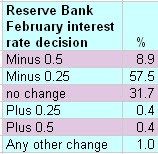“It’s a girl!”— could be a death sentence. Stop telling women the s-x of their coming child until after 30 weeks of pregnancy is the call this week by the editorial in the Canadian Medical Journal. The aim of the change is to stop female feticide which is happening in North America in numbers large enough to distort the male to female ratio in some ethnic groups.

The editorial asks:
“Should female feticide in Canada be ignored because it is a small problem localized to minority ethnic groups? No. Small numbers cannot be ignored when the issue is about discrimination against women in its most extreme form. This evil devalues women. How can it be curbed? The solution is to postpone the disclosure of medically irrelevant information to women until after about 30 weeks of pregnancy.
A pregnant woman being told the s-x of the fetus at ultrasonography at a time when an unquestioned abortion is possible is the starting point of female feticide from a health care perspective. A woman has the right to medical information about herself that is available to a health care professional to provide advice and treatment.
The s-x of the fetus is medically irrelevant information (except when managing rare s-x-linked illnesses) and does not affect care. Moreover, such information could in some instances facilitate female feticide.
Therefore, doctors should be allowed to disclose this information only after about 30 weeks of pregnancy — in other words, when an unquestioned abortion is all but impossible.”
The editorial argues that research in Canada has found the strongest evidence of s-x selection at higher parities if previous children were girls among Asians — that is people from India, China, Korea, Vietnam and Philippines. What this means is that many couples who have two daughters and no son selectively get rid of female fetuses until they can ensure that their third born child is a boy.
These researchers have also documented male-biased s-x ratios among US-born children of Asian parents in the 2000 US census.
Owning a race horse used to be fun. At a time when politicians of all persuasions regularly talk about the need to cut red tape for small business people everywhere, how typical to find that from the end of this month there will be new forms to fill in if you want to avoid the risk of someone else legally grabbing your horse.
The culprit is the Commonwealth Government legislation that goes under the title The Personal Property Securities Act 2009 that will be supported by a single national online register of personal property security interests called the PPS Register whereby the ownership of assets such as racehorses can be recorded.
In a note to racehorse owners the industry’s own Registrar of Racehorses advises that by making a registration on the PPS Registry the ownership of the horse is protected.
If you don’t register your interest on the PPSA register whilst your horse is in someone else’s care, a third party could register an interest over the horse and gain possession of it should the lessee or the carer strike financial trouble.
And don’t think that this new layer of bureaucracy gets rid of the necessity of dealing with the Registrar of Racehorses.
For the purposes of integrity and administration of racing it will still be a requirement under the Australian Rules of Racing to register the name of the racehorse and ownership with the Registrar of Racehorses (RISA) and register syndicates, leases and transfers of ownership with the Deputy Registrar (Principal Racing Authority).
I couldn’t agree more with my old punting mate and bloodstock agent John Brown who sent me the details of this absurdity: Who put the fun police in charge of racing? How can they allow this sort of big brother thing to go on?
A chart worth a thousand words. I don’t know about you but I have trouble grasping the real significance every time our Treasurer talks about the benefit of having Asian countries as our growing trading partners.
This chart from The Economist website helped me understand what Wayne means and just how lucky we are compared with Europeans.

Interest rates to fall again? The Crikey Interest Rate Indicator reckons there are about two chances in three of of the Reserve Bank cutting rates again when it meets for the first time in 2012.








The personal property securities register should protect against a problem that has existed for a very long time, such as people selling to unsuspecting and innocent buyers property that has been stolen or still has money owing on it.
There is no obligation to include any property on the personal property securities register. If there is a contest between 2 people who claim ownership of some property, such as the original owner and an innocent purchaser from a thief, then ownership is determined by the normal common law principles if neither of the claimants has registered their interest. However, a person who registers their interest gets priority over someone who hasn’t registered their interest or someone who registers later.
Since horse theft has been a very old problem and the personal property securities register should protect owners, buyers and other people with a legitimate interest in the horse, it should be welcomed by horse lovers, even curmudgeons!